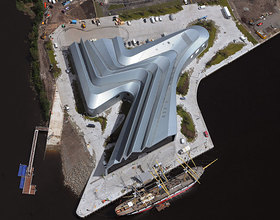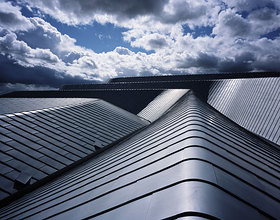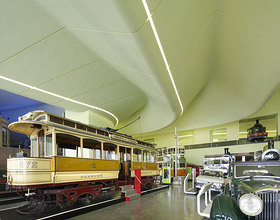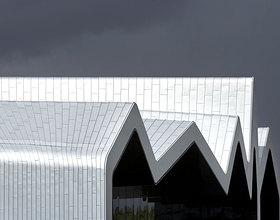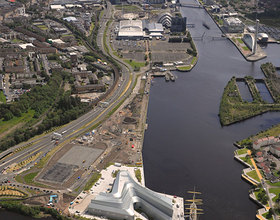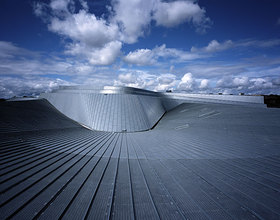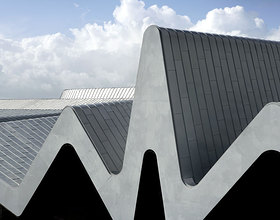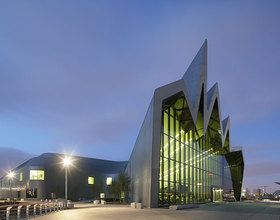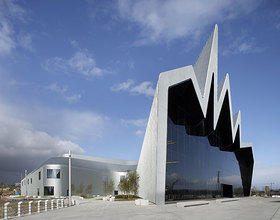RIVERSIDE MUSEUM
-
The historical development of the city of Glasgow and the ship-building, seafaring and industrial waterfront along the river Clyde, gives both a unique shared legacy. Situated where the city meets river, ‘flowing’ between the two in a symbolic representation of their dynamic relationship, the museum places itself in the very roots of its origins – establishing a clear connection between its exhibits and their wider context. The building, conceived as a sectional extrusion open at both ends, its cross-sectional outline encapsulating a wave or pleat, faces Glasgow and the Clyde, becoming porous to its context on both sides. However, this connection is not direct, but instead diverted to create a journey into the exhibition spaces contained. In every sense, the interior path through the space becomes a mediator between city and river, which can be both hermetic or porous as required. Circulation is through the main, open and column-free exhibition space, from which views outward allow visitors to build up a gradual sense of their external context. At the structure’s end point, the café and corporate entertainment space offers views over the confluence of the river Kelvin and the Clyde, with access to a landscaped open courtyard. Front and rear elevations are marked by their clear glass facades, both allowing expansive views over the surrounding river landscape. Ringed stones create a shadow path around the building, moving visitors from hard surfaces to a softer landscape of grass, creating an informal space. Lined trees along the existing ferry quay reduce exposure to prevailing winds, while shallow pools along the museum’s south and east sides create a seamless continuity with the river.
Photo credits: Helene Binet, Hawkeye Aerial Photography, Alan McAteer.
1870 Projects


